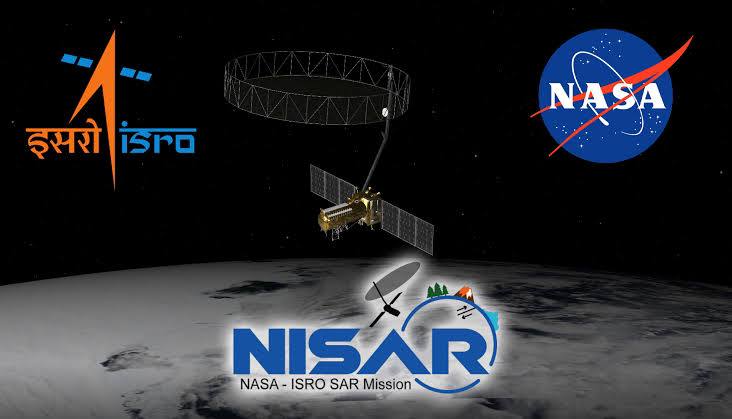
• NISAR stands for NASA-ISRO Synthetic
Aperture Radar, the first satellite
jointly developed by NASA and ISRO.
• Scheduled to launch on today evening
(30th July 2025), it’s a landmark in Indo-
US space cooperation and has been in
development for over 15 years.
• It is the most powerful and expensive Earth observation
satellite ever built.
WHAT MAKES NISAR UNIQUE?
• Dual Synthetic Aperture Radars (SARs) –
one from NASA (L-band) and one from ISRO
(S-band).
• SARs are advanced imaging radars that can
see through clouds, smoke, rain, and
darkness, enabling all-weather and daynight
monitoring.
• SARs mimic large ground antennas using advanced algorithms in space.
• L-band SAR uses longer
wavelength microwaves that
can penetrate vegetation,ce, and soil, helping map
surfaces under forests and measure biomass.
S-band SAR uses shorter
wavelengths to capture
surface features like crop
stages, water bodies, and
canopy structure.
• Both provide complementary
Earth images.
TECHNICAL FEATURES
• 12-metre wide antenna simulates the resolution of a 20 km groundbased
dish!
INTEGRATED SYNCHRONOUS IMAGING:
• Both SARs will look at the same place at the same time, enabling
unprecedented detail.
• Generates 80 TB of data/day, 3x more than current satellites.
APPLICATIONS AND IMPACT
• Climate Studies: Track changes in ice, vegetation, land deformation.
• Disaster Monitoring: Helps detect earthquakes, volcanoes, landslides.
• Carbon Estimation: Accurate forest biomass data for carbon stock
estimation.
• Agriculture: Tracks crop growth and yield stages, especially in India.
• Military & Border Surveillance (implicit use): All-weather imaging over remote terrain
- INDIA-US COLLABORATION & STRATEGIC CONTEXT
• NASA contributed L-band radar, GPS, 12m antenna, worth $1.16
billion.
• ISRO provided S-band radar, launch vehicle, spacecraft, worth $90
million.
• First time both agencies have co-developed and will co-operate in
mission ops.
• Launch reflects growing strategic synergy—India joined Artemis
Accords, and astronauts like Shubhansu Shukla are now training with
NASA.
• Marks India’s growing relevance in space diplomacy and global Earth
sciences.
For More Updates follow us on :-
Instagram – https://www.instagram.com/filmy_scoop7?igsh=ZGk1aDBuZjk1MWdo
On X – https://x.com/FilmyScoop7
This Article is written by – Mr. Dr. Pravin Chavan





